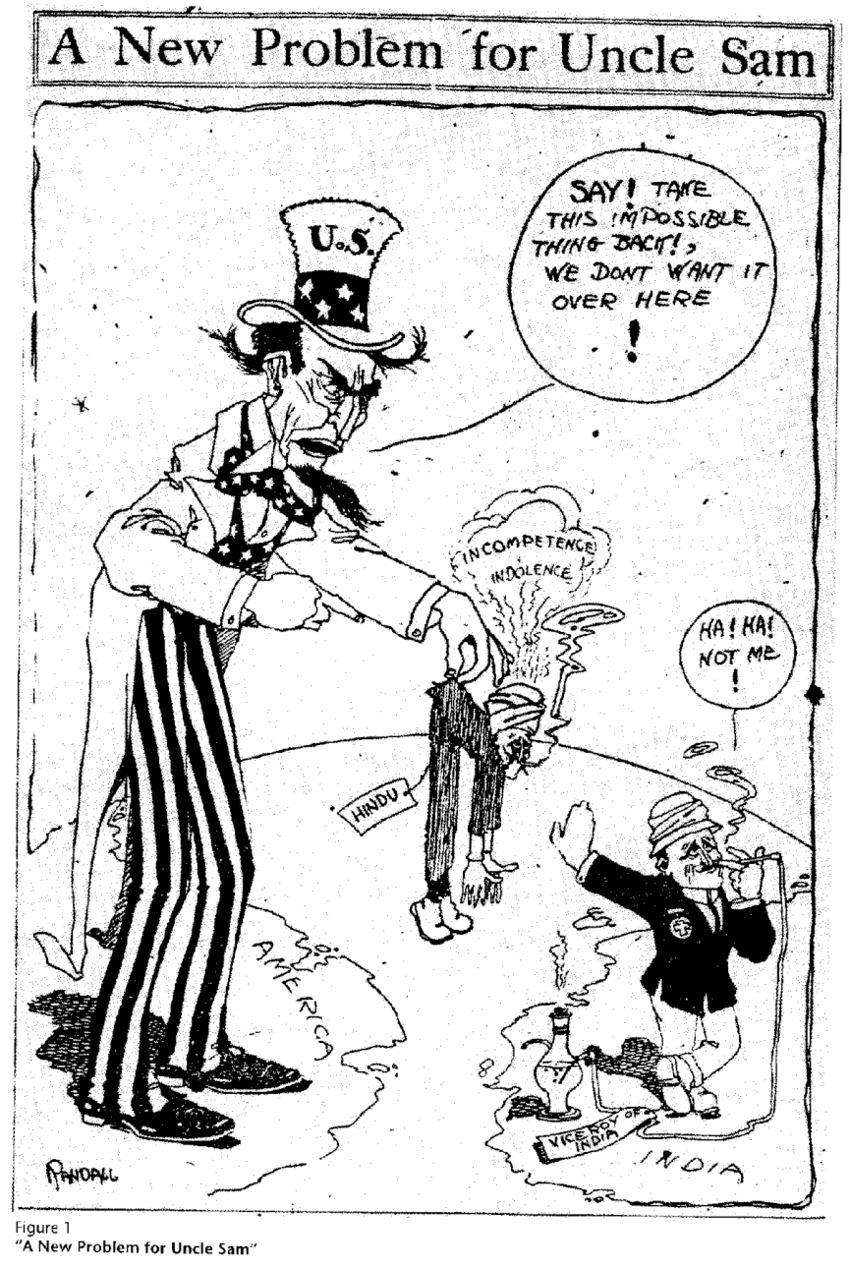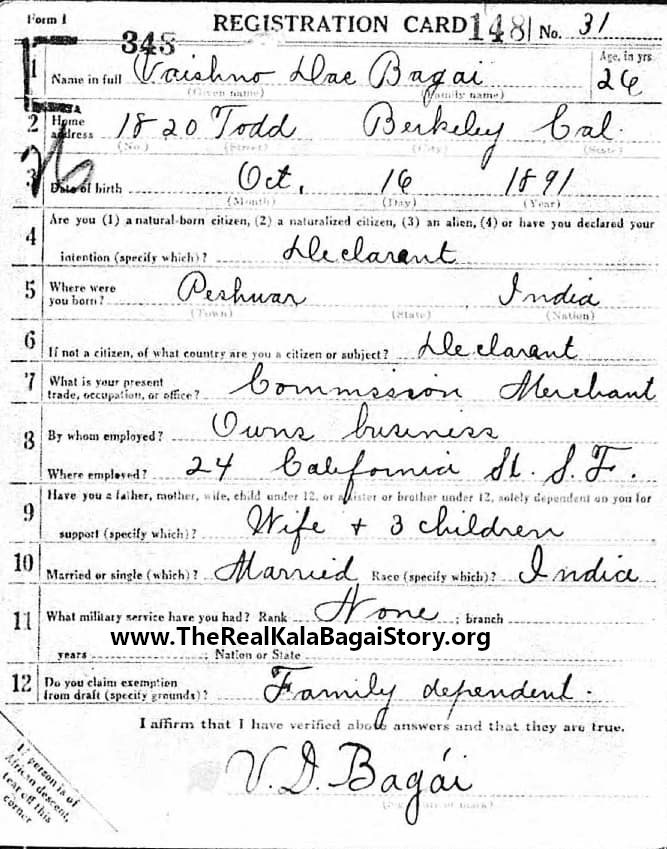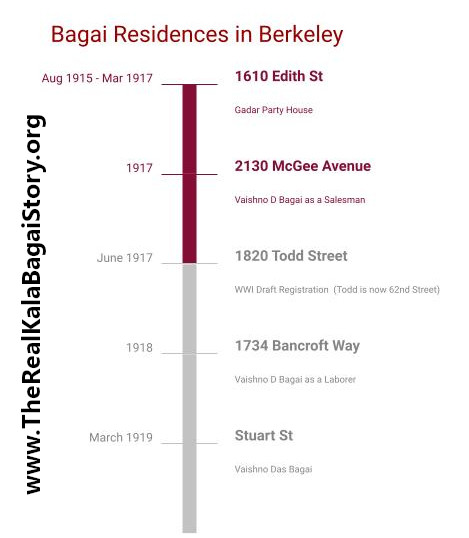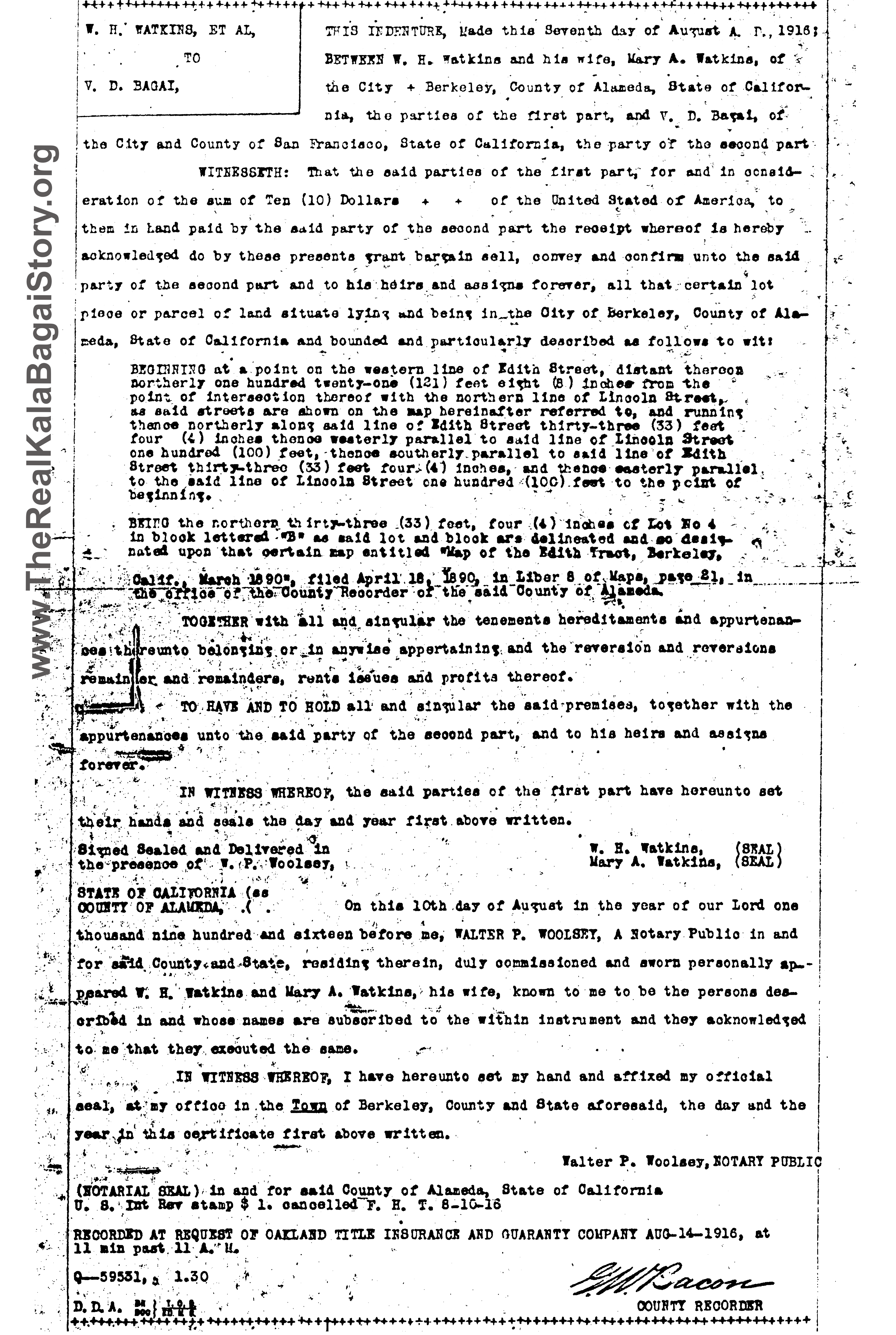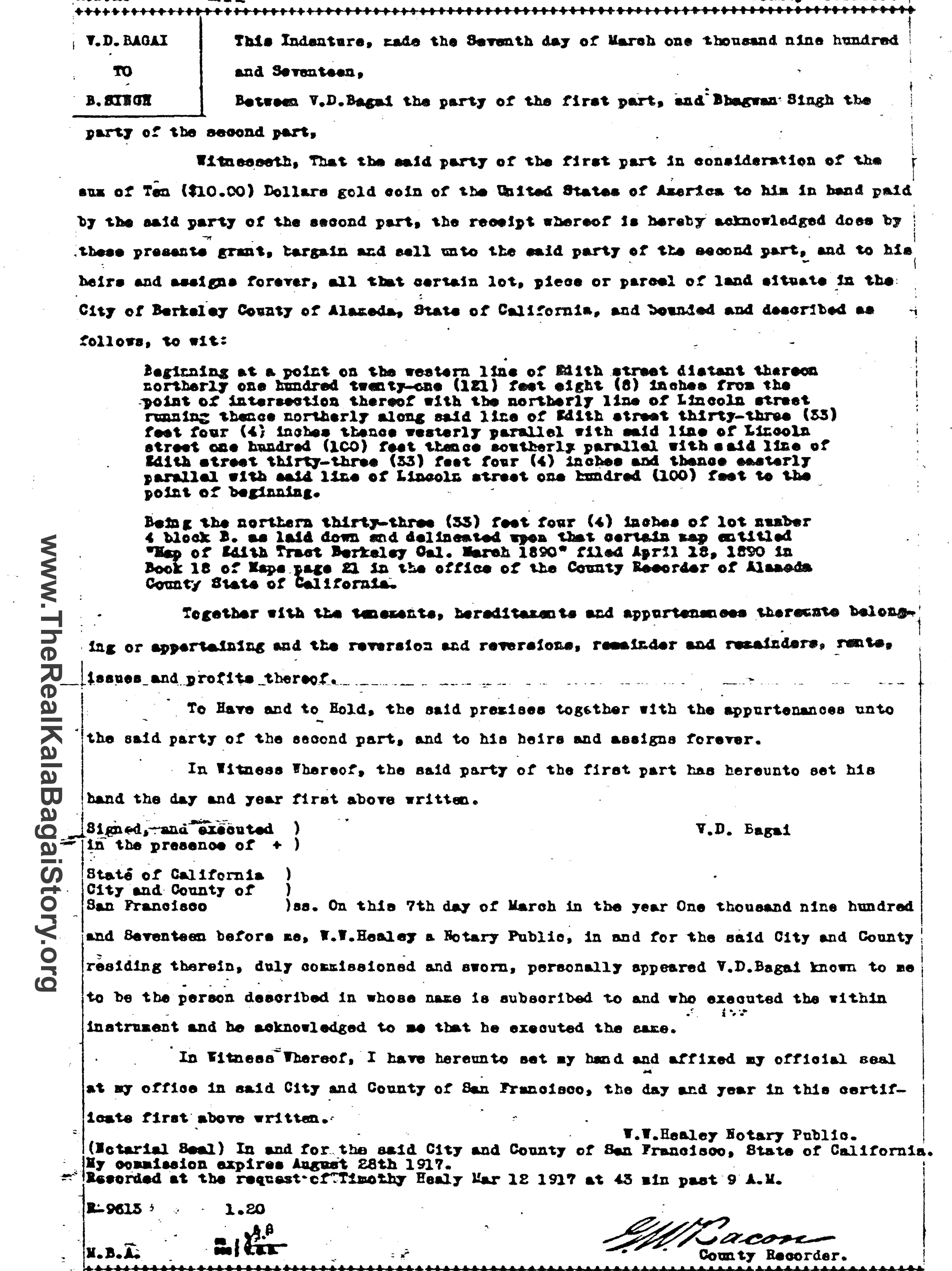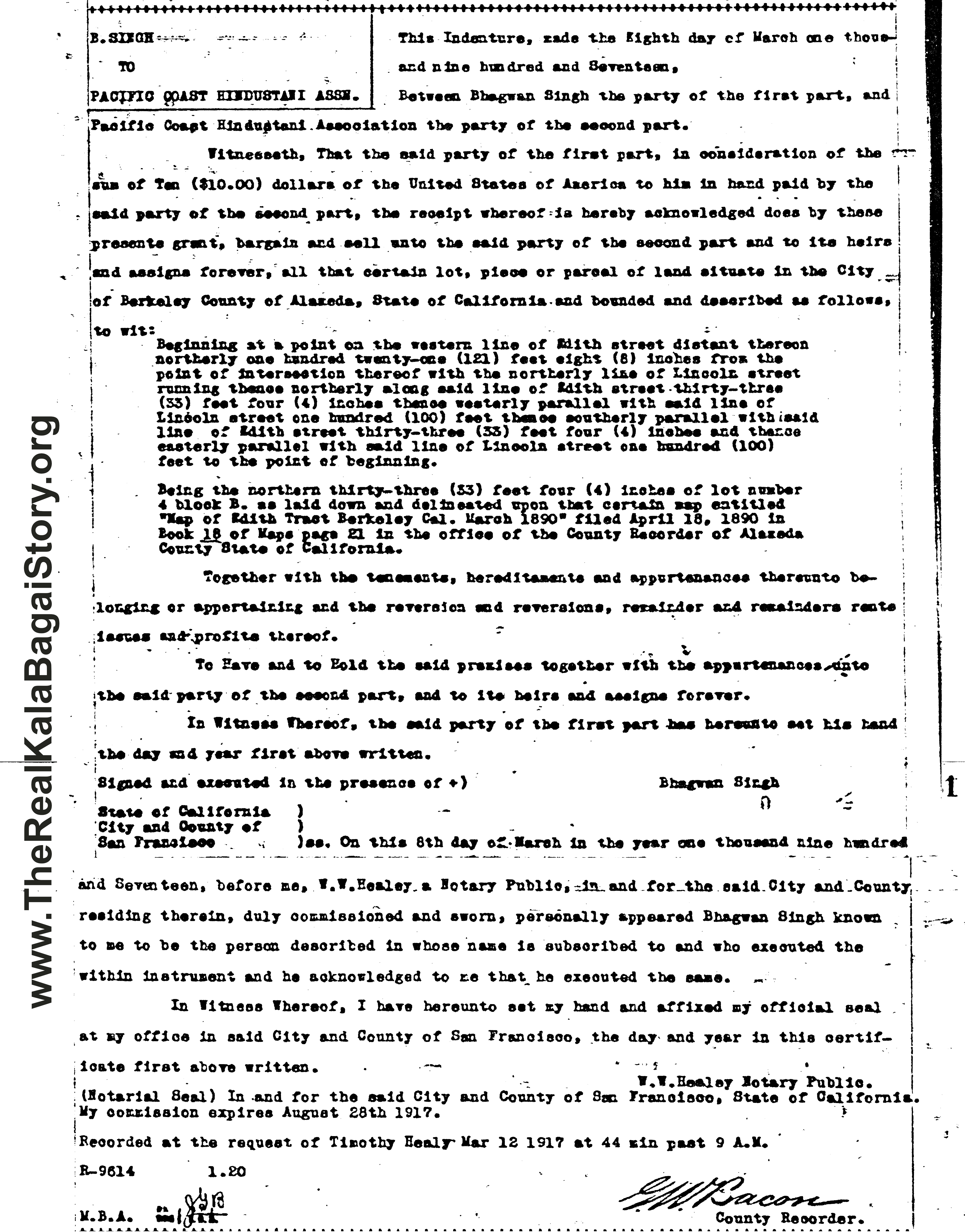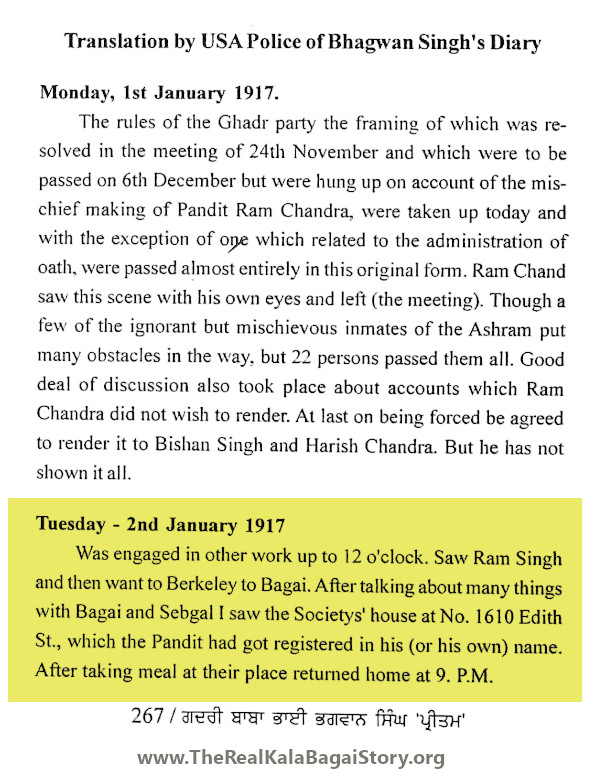Kala Bagai Way : Mistaken Honor

Kala Bagai Way, a street in the very heart of Berkeley, was, in 2020, named after the wife of a double-agent and traitor who betrayed India's freedom fighters of the Ghadar Movement he had "befriended."
The Ghadar Movement was initiated in Astoria, Oregon, and later headquartered in San Francisco during the early 1900s. Founded by expatriate Indians, its mission was to liberate India from British colonial rule.
As clearly revealed by British government documents, Bagai's primary purpose in arriving in San Francisco with his family was to gather intelligence for the British government on his fellow countrymen who were advocating for India's independence and equality for all.
Bagai played a crucial role in assisting the British in dismantling the Ghadar Movement because it posed a significant threat to the British Empire in India. He was paid handsomely for his spying by the British government.
The role of Bagai as a double agent is well documented by historians and scholars. The primary research documents -- written communications preserved in the UK National Archives in London -- referencing Bagai's employment as a British spy clearly indicate that he was very well known among high-ranking British officers who had admired his work for them.1
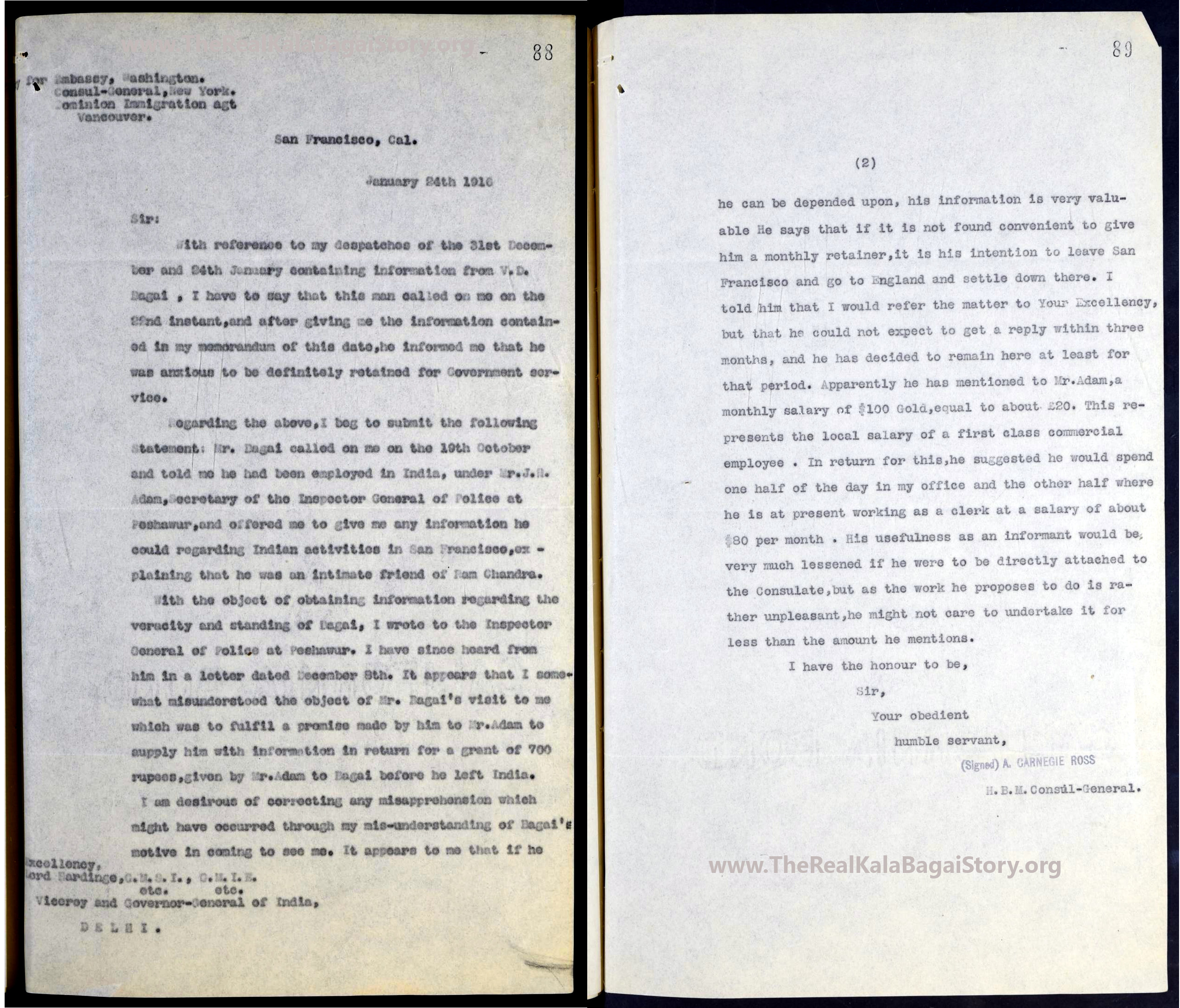
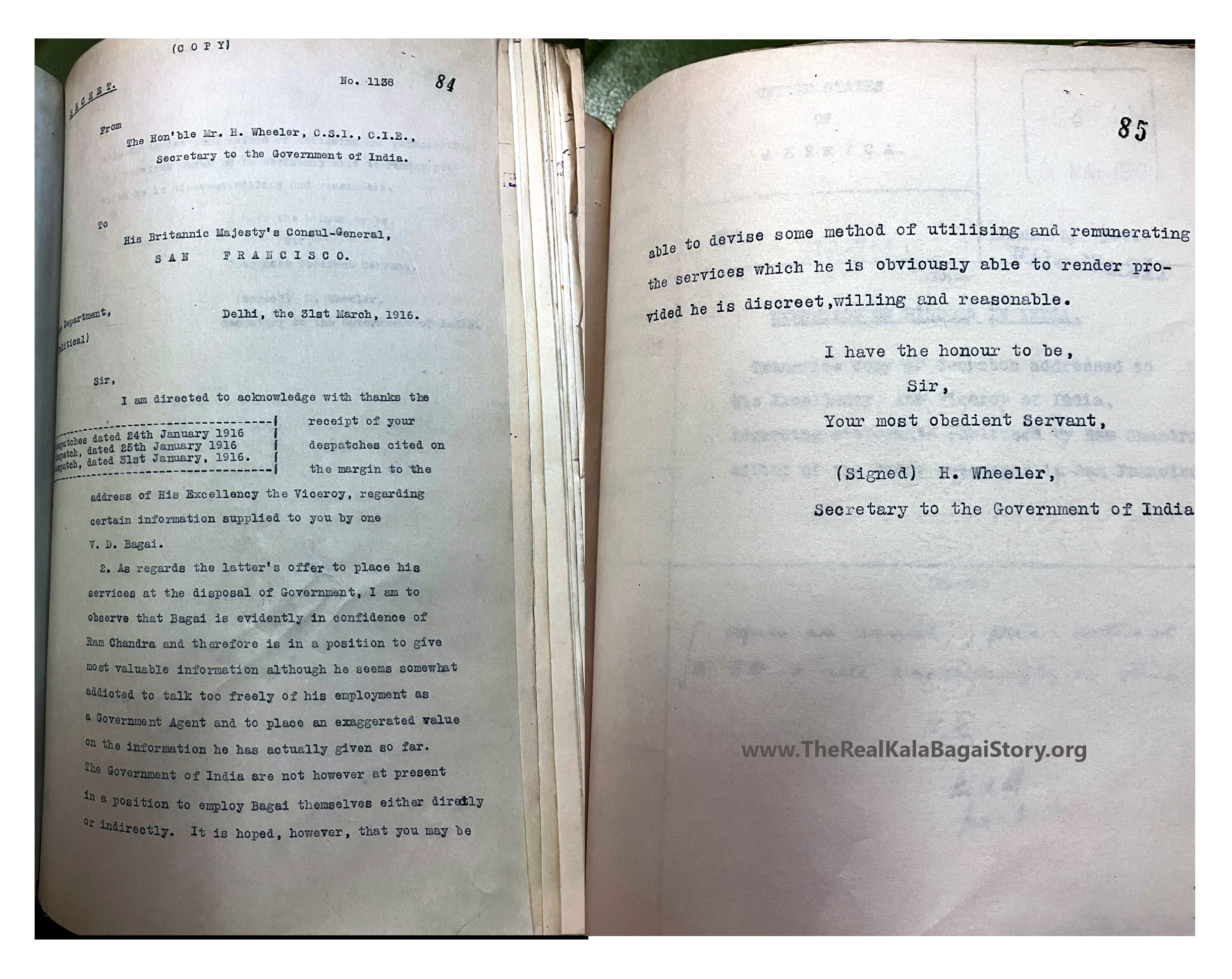
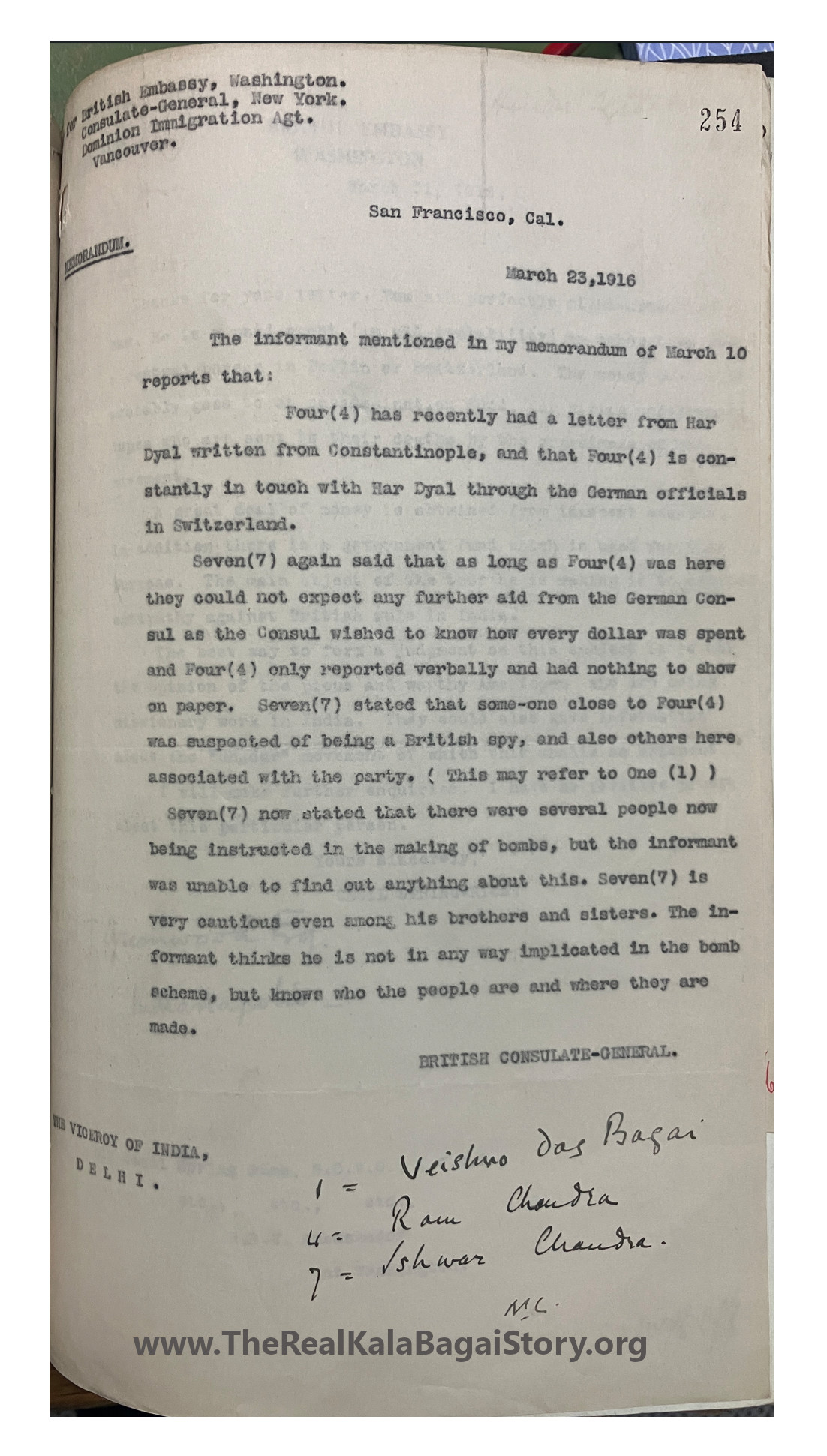
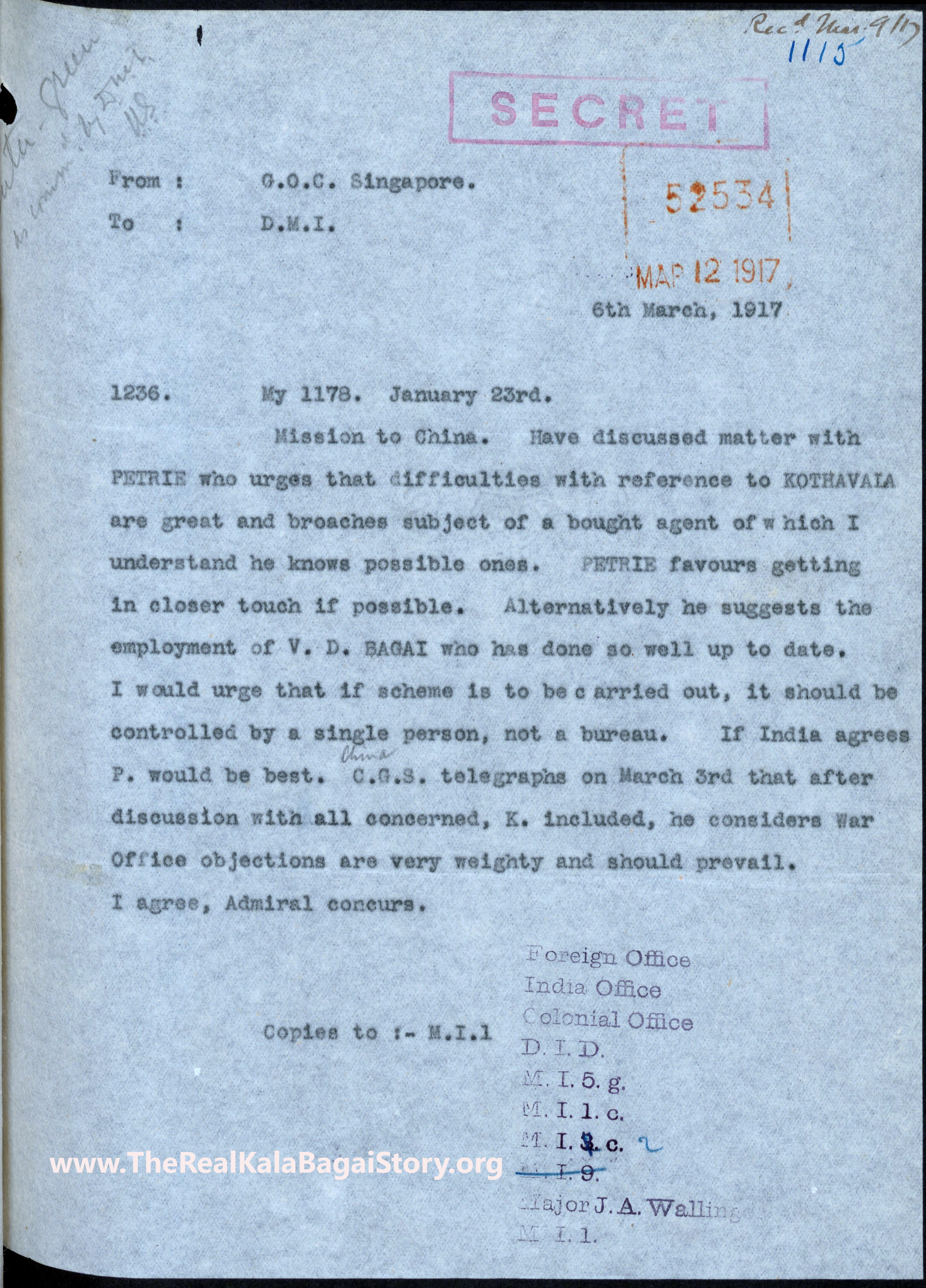
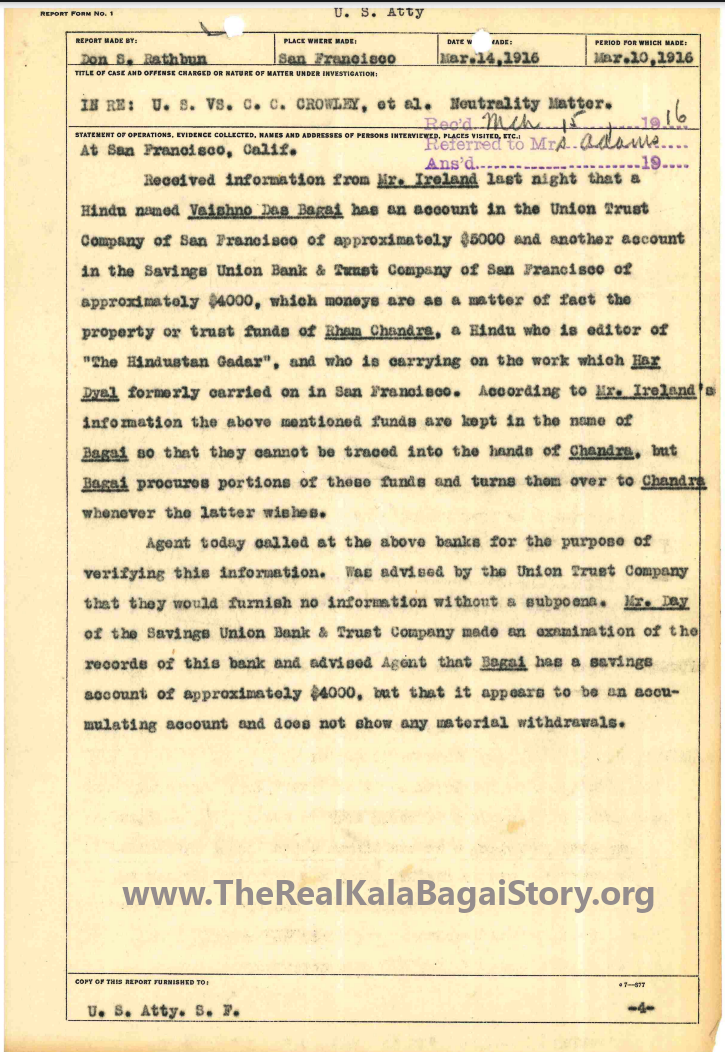
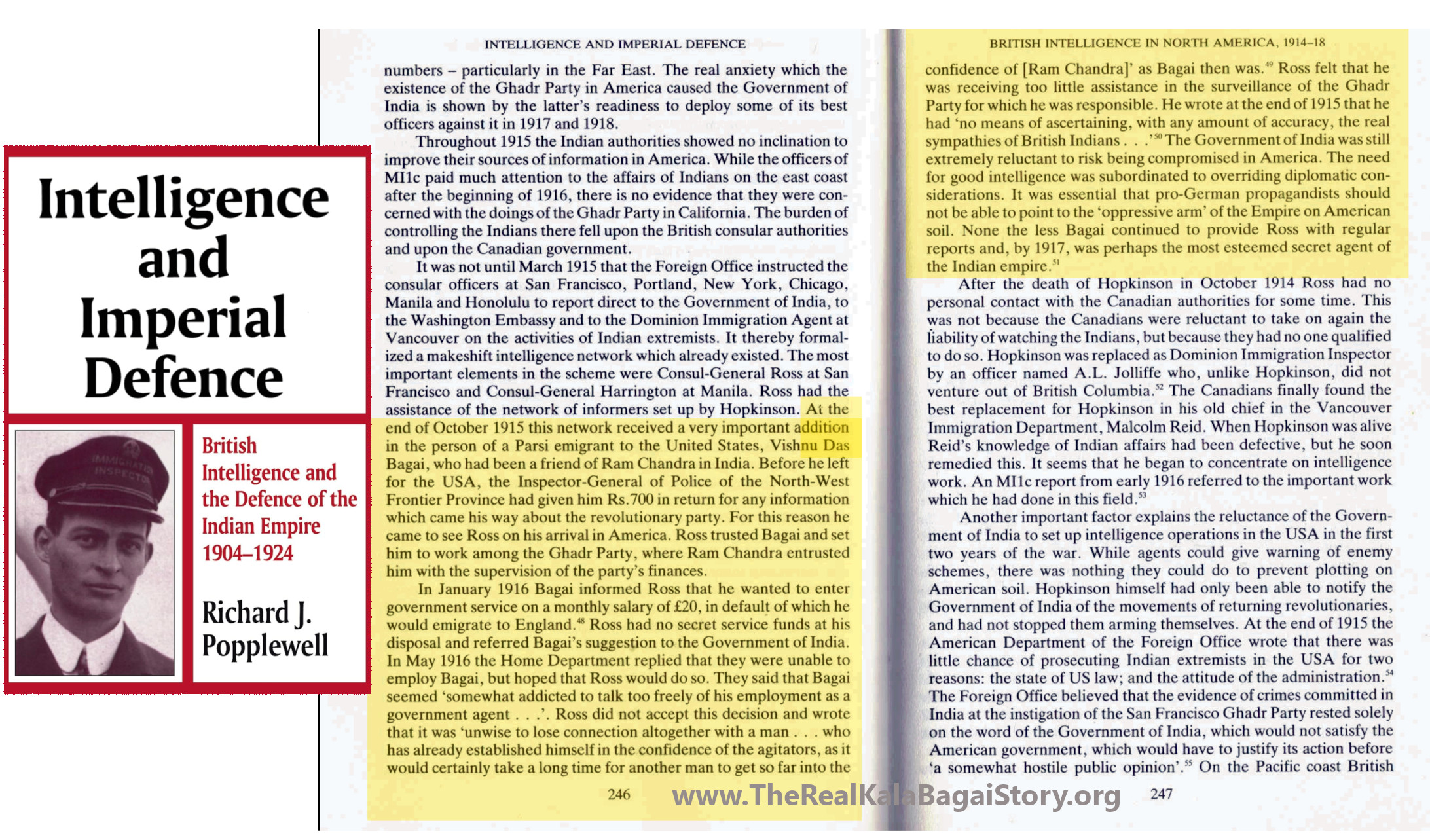
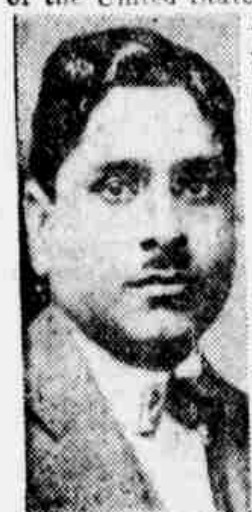 Vaishno Das Bagai came to San Francisco with his wife, Kala, and their three sons in
1915, bringing with them $25,000 in gold.2 Before coming here, Bagai offered his
services as a paid informant to the British government. In San Francisco he worked
closely with the British Consulate, spying on the activities of the revolutionary Gadar
movement in California while simultaneously acting as a committed member of this
organization.3 On July 8, 1917, the San Francisco Examiner reported, "Federal grand
jury
indicted 105 persons [Gadar members as well as German operatives] for plotting here a
rebellion in India" with the help of Germany.4 The Indian revolutionaries were
accused
of violating U.S. neutrality laws by conspiring with Germany against Britain during
World War I.5 During a police raid of the Gadar headquarters in San Francisco, all
staff
members were arrested. However, Mr. Bagai, who claimed to be a supporter of the
Gadar Party, finance manager, and a close friend of the
movement's leader, Ram Chandra, was never charged or mentioned by the prosecution
during the trial, which took place from November 20, 1917, to April 24, 1918. Mr. Bagai
played an instrumental role in helping the British crush the Gadar movement by
identifying party members (including staff) and their roles and providing evidence that
was used in court.6 The trial led to the convictions of 29 individuals. Among those
found
guilty were 14 Indian nationalists who were sentenced to lengthy periods of
incarceration.7 These convictions ultimately broke the back of the Gadar movement's
dream of freeing India from British rule.
Vaishno Das Bagai came to San Francisco with his wife, Kala, and their three sons in
1915, bringing with them $25,000 in gold.2 Before coming here, Bagai offered his
services as a paid informant to the British government. In San Francisco he worked
closely with the British Consulate, spying on the activities of the revolutionary Gadar
movement in California while simultaneously acting as a committed member of this
organization.3 On July 8, 1917, the San Francisco Examiner reported, "Federal grand
jury
indicted 105 persons [Gadar members as well as German operatives] for plotting here a
rebellion in India" with the help of Germany.4 The Indian revolutionaries were
accused
of violating U.S. neutrality laws by conspiring with Germany against Britain during
World War I.5 During a police raid of the Gadar headquarters in San Francisco, all
staff
members were arrested. However, Mr. Bagai, who claimed to be a supporter of the
Gadar Party, finance manager, and a close friend of the
movement's leader, Ram Chandra, was never charged or mentioned by the prosecution
during the trial, which took place from November 20, 1917, to April 24, 1918. Mr. Bagai
played an instrumental role in helping the British crush the Gadar movement by
identifying party members (including staff) and their roles and providing evidence that
was used in court.6 The trial led to the convictions of 29 individuals. Among those
found
guilty were 14 Indian nationalists who were sentenced to lengthy periods of
incarceration.7 These convictions ultimately broke the back of the Gadar movement's
dream of freeing India from British rule.
